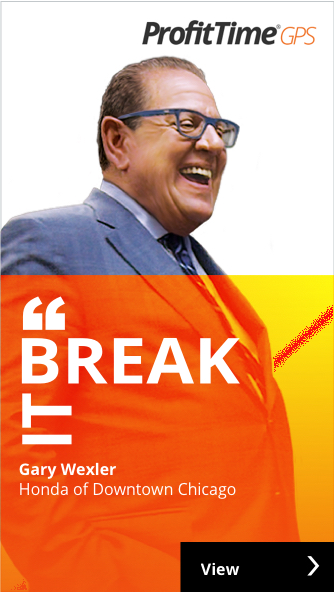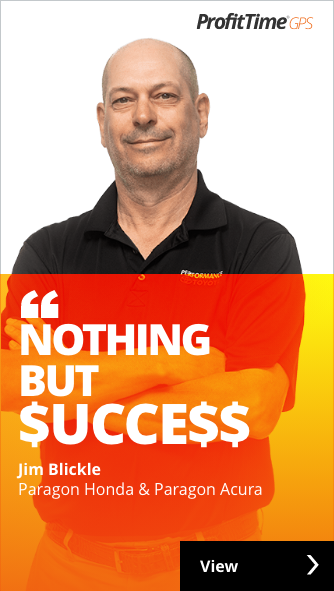Three Take-Aways From CarMax’s Used Vehicle Playbook
Just before Christmas, CarMax released results for its third quarter of fiscal year 2013. The company, like many velocity dealers, saw positive results in used vehicles—total unit sales were up 16 percent for the quarter compared to the prior year, an increase that included a 12 percent gain in same-store sales volumes.
As I reviewed the company’s financials and earnings call transcript, I found three share-worthy nuggets for all dealers who seek to maximize their used vehicle return on investment (ROI) sales and profitability:
An emphasis on “total gross.” In my new book, Velocity Overdrive: The Road to Reinvention, I share how some velocity dealers have ditched the traditional focus on “average front-end gross” in favor of a more holistic, “total gross” mindset to guide their used vehicle operations. The rationale: A “total gross” approach minimizes the pricing and inventory age problems that occur when dealers focus solely on “average front-end gross.”
During an earnings call, an analyst asked CarMax president Tom Folliard if he thought a slight decline in the company’s average front-end gross profit (it dropped $25 to $2,146/car for the quarter) would continue as the company increased its sales volumes and market conditions put downward pressure on asking prices. I liked Folliard’s “total gross”-minded response: “We’ve operated in depreciating environments before and have been able to manage our margins pretty good. I would take lower margins for much higher sales. It really just depends what’s going on in the overall marketplace including wholesale, including finance and including demand and supply.”
Self-discovery for buyers. CarMax is testing the concepts of unlocking all doors on its vehicles and allowing customers to take salesperson-free test drives. The initiatives are underway at CarMax’s “next generation” stores and may be extended to its other retail outlets. In addition, the company noted the launch of a mobile app for customers, which currently accounts for 5 percent of the company’s website traffic. Such moves strike me as smart ways to advance a positive, customer-centric dealership experience.
Know when to hold ‘em, know when to fold ‘em. CarMax reported a 10 percent gain in its wholesale unit sales for the quarter—due to more customers seeking appraisals for their cars. On average, CarMax buys three out of every 10 cars it appraises and it generates an average $923 gross profit when it wholesales the cars it acquires. The stats are useful reminders for dealers who are aggressively sourcing inventory from customers: If you buy them right, there’s still a profit-making opportunity if a car doesn’t meet condition/mileage parameters as a retail unit.
CarMax also discussed its ongoing expansion plans, which include new stores in smaller markets such as St. Louis, Jackson, Tenn., and Harrisonburg, Va., in the coming year. The growth plans will mean a greater degree of competition for dealers as CarMax CEO Foillard says the company is “basically trying to go everywhere we’re not.”
The post Three Take-Aways From CarMax’s Used Vehicle Playbook appeared first on Dale Pollak.

















